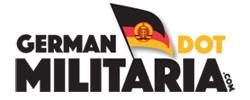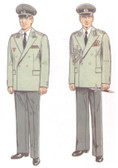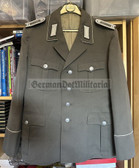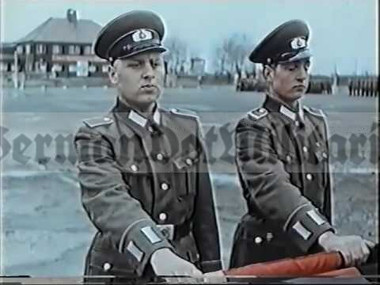 Loading... Please wait...
Loading... Please wait...Currency Displayed in
- Home
- East German Info Corner
- Uniforms
- Introduction to the first upper body garments of the ordinary NVA soldier in 1956 - By F.H.J.H - Uniforms Reference Library
Categories
Introduction to the first upper body garments of the ordinary NVA soldier in 1956 - By F.H.J.H - Uniforms Reference Library
Product Description
At first a small note should be made in regard to the earliest uniforms worn by the Nationale Volksarmee: Contrary to what some inexperienced enthusiast might suspect, all the uniforms worn by the new Nationale Volksarmee were, although being styled after the uniforms worn in Germany before 1945, all newly produced stock, with as many differences as similarities to their predecessors.
The first uniforms were a world apart from the uniforms which were in use when the Berlin Wall came down. In 1956 the newly created army used an elaborate system of different models of insignia and uniforms, many of which quickly became simplified in order to ease the production and reduce the cost after the NVA turned from a professional into a conscripted army.
A common soldier in the NVA in 1956 would get several uniforms issued. The most eye-catching of these being the parade uniform. The 1956 parade uniform jacket can be seen as a hybrid between the German Wehrmacht Waffenrock and the interwar geschmückte Feldbluse combined in one eclectic uniform(1). The parade jacket was of a stone grey basic German jacket type design with darker grey collar.(2)The parade jacket had cuff bars (Ärmelpatten) on the cuffs, specific to the Waffenrock, combined with having piped simple sleeve turn backs, closer to the aforementioned geschmückte Feldbluse.(3) The parade uniforms all had shiny silver coloured buttons and were decorated with a branch specific facing colour (Waffenfarbe), these being:
-White for infantry
-Red for artillery
-Black for pioneers
-Yellow for signals
-Pink for tankists
-Dark green for rear services
-Dark red for the Ministry of State Security
-Light blue for air force
Colours were displayed on the collar tabs/cuff bars, the shoulder boards, but also the cuff and/or collar piping, the coloured piping being a practice which was discontinued in the early 1960's already. The parade jacket was completely lined in a cotton/synthetic mix called Perlon.

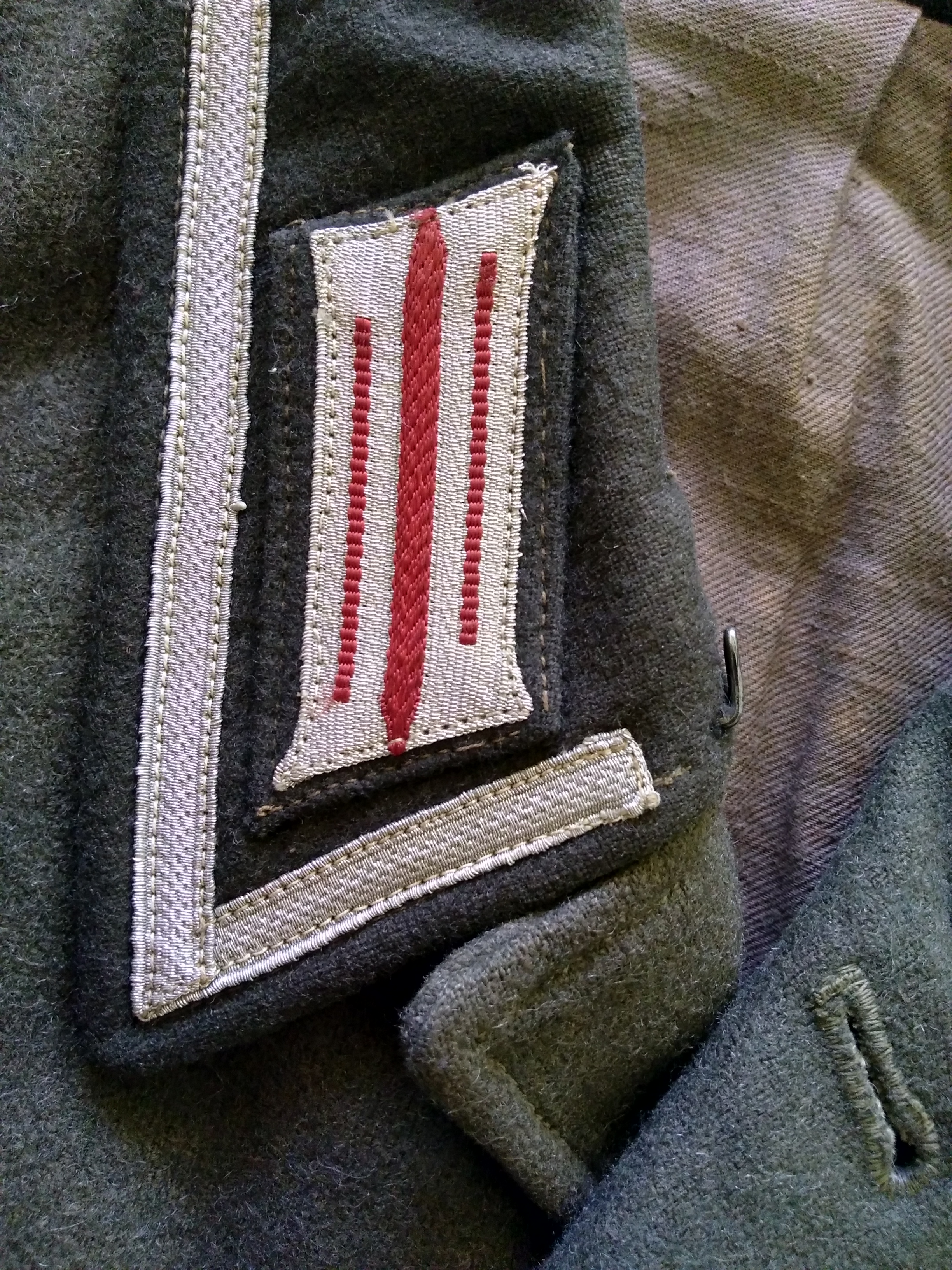
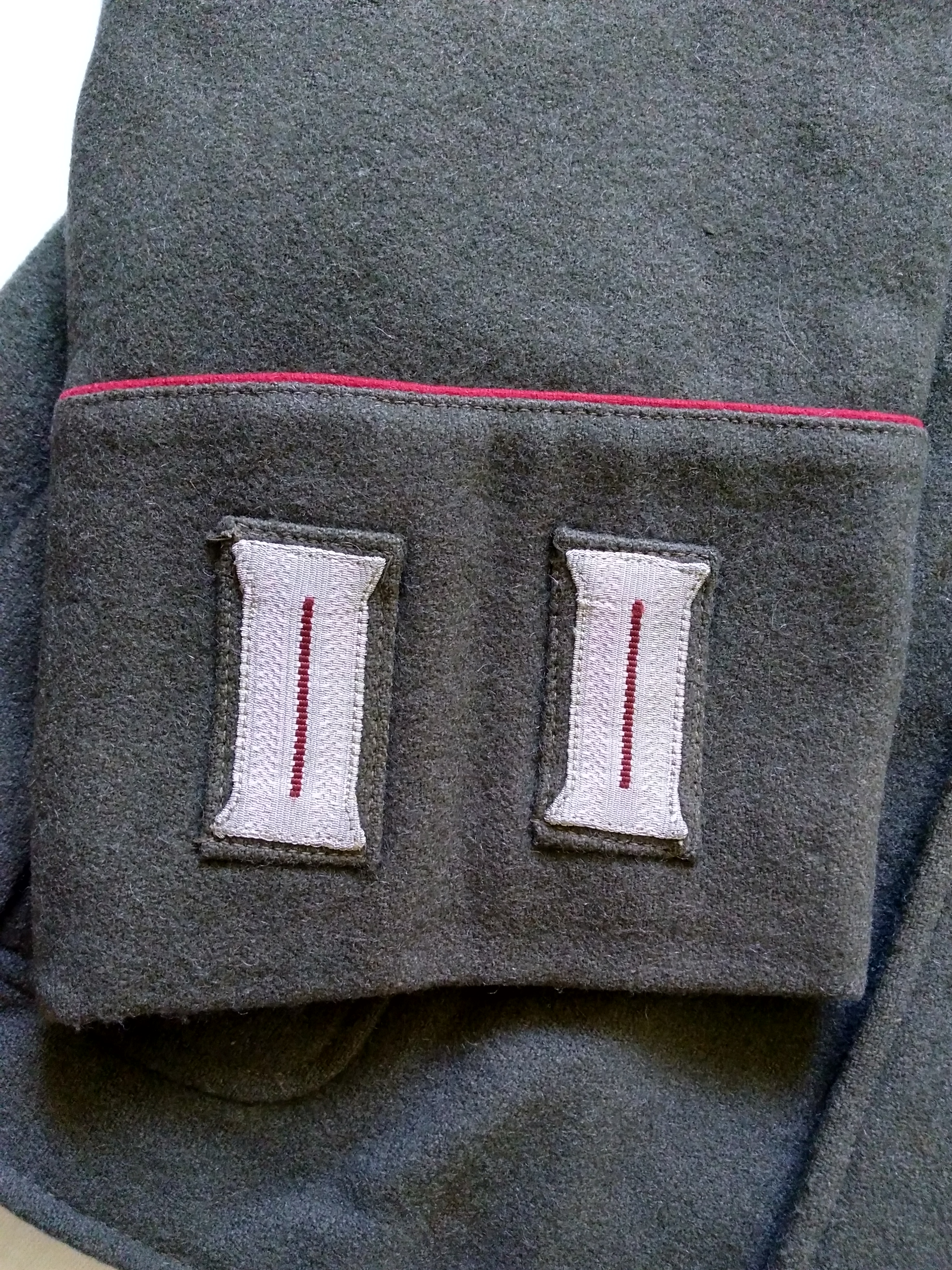


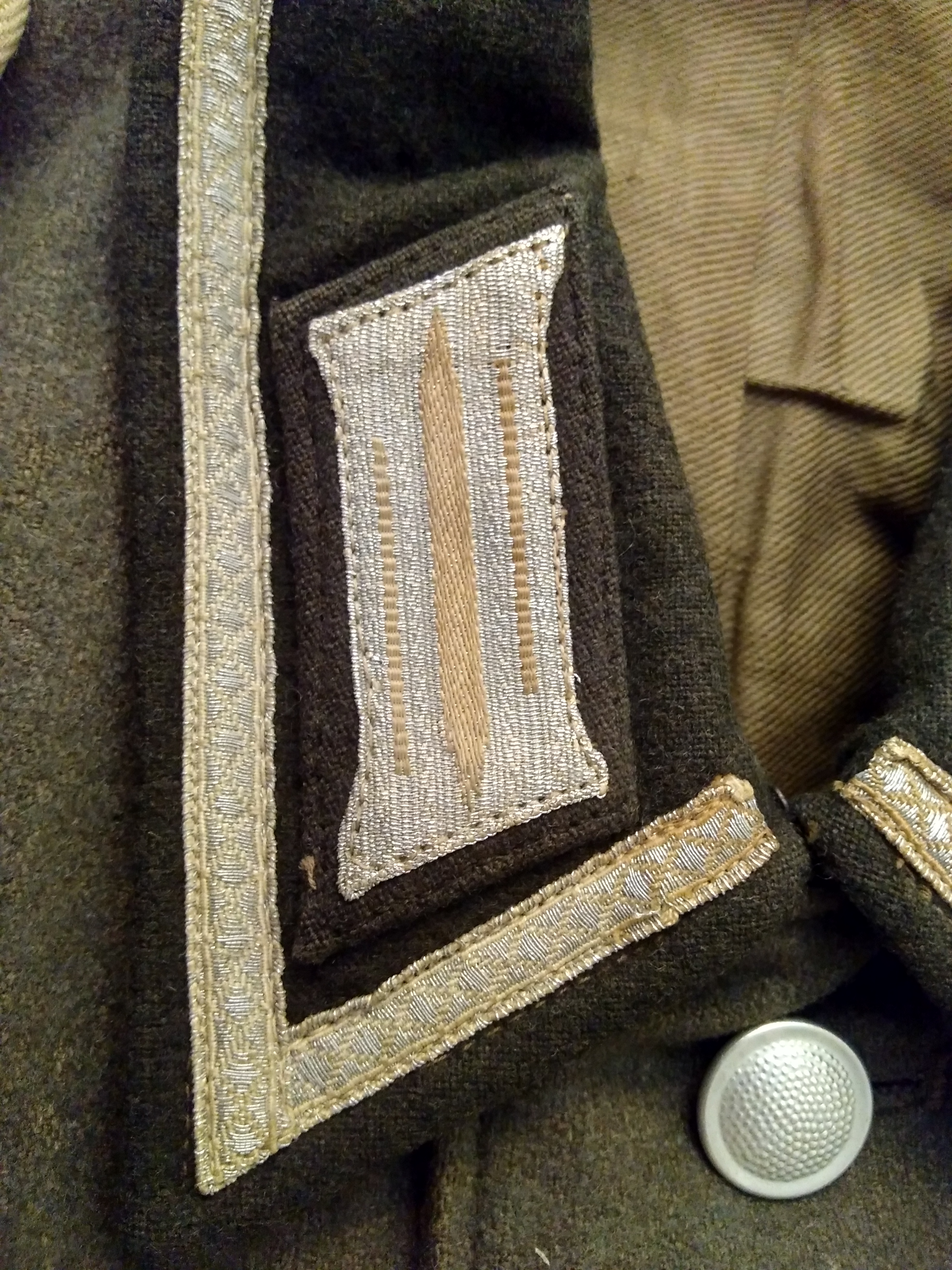


The Drillich, meant as an all purpose work, training and field uniform, was in its entirety made of heavy, grey cotton with a distinctive herringbone twill pattern (Fischgrät). This uniform featured insignia and buttons commonly found on the service uniforms and had reinforcements around the elbows, drawstrings in the back and was completely unlined.
For winter wear the soldier was issued an overcoat (Mantel). This coat was double breasted with two rows of 5 buttons, faux cuff turn backs and a dark collar. The coat had slits around the waist for WW2 style belt hooks to fit through to help carry the equipment if needed.


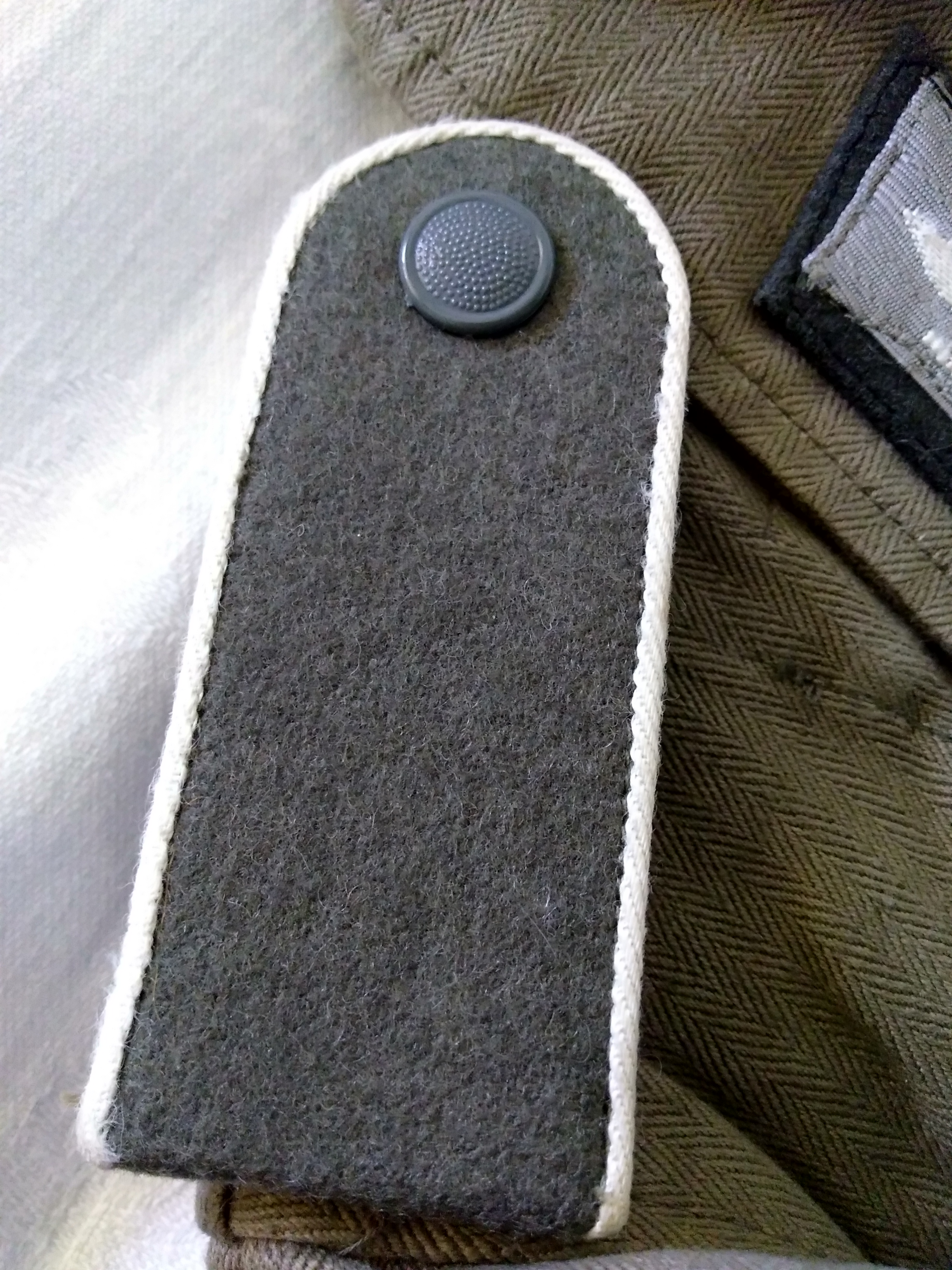

The insignia found on these early NVA uniforms was, like the basic uniform itself, also an eclectic mix of older styles. The basic enlisted collar tab followed the typical Germanic ‘double buttonhole’ design: the so-called Doppellitzen/Kapellenlitzen (4). The Waffenfarbe was displayed on all three middle stripes, those being the Mittelspiegel and the Litzenspiegel. The Doppellitze was separately sewn on a coloured backing, like on the M1936 Feldbluse, though the Doppellitze was entirely machine sewn on flat, as opposed to having the front ends folded and partially hand sewn, this being the simplified way which became popular in wartime simplified uniforms.
The shoulder boards were of the German shape with rounded top, though with a design slightly modified with elements closer to the Soviet shoulder board than the older Wehrmacht types. First up, the NVA shoulder board had no real buttonhole. In typical Russian officer fashion, the shoulder boards featured a small round hole, and the buttons were tied on using laces. This making the boards secure, but also more cumbersome to swap out and mount/remove. The boards themselves are bigger than later examples, made out of wool on both sides with twisted piping and thick cardboard backing. Secondly, the rank system was German looking, but its details were more in line with the Soviet rank system. The biggest difference can be observed in the Gefreiter ranks and the officer star arrangements, which are both modeled on the Soviet, rather than German rank system.



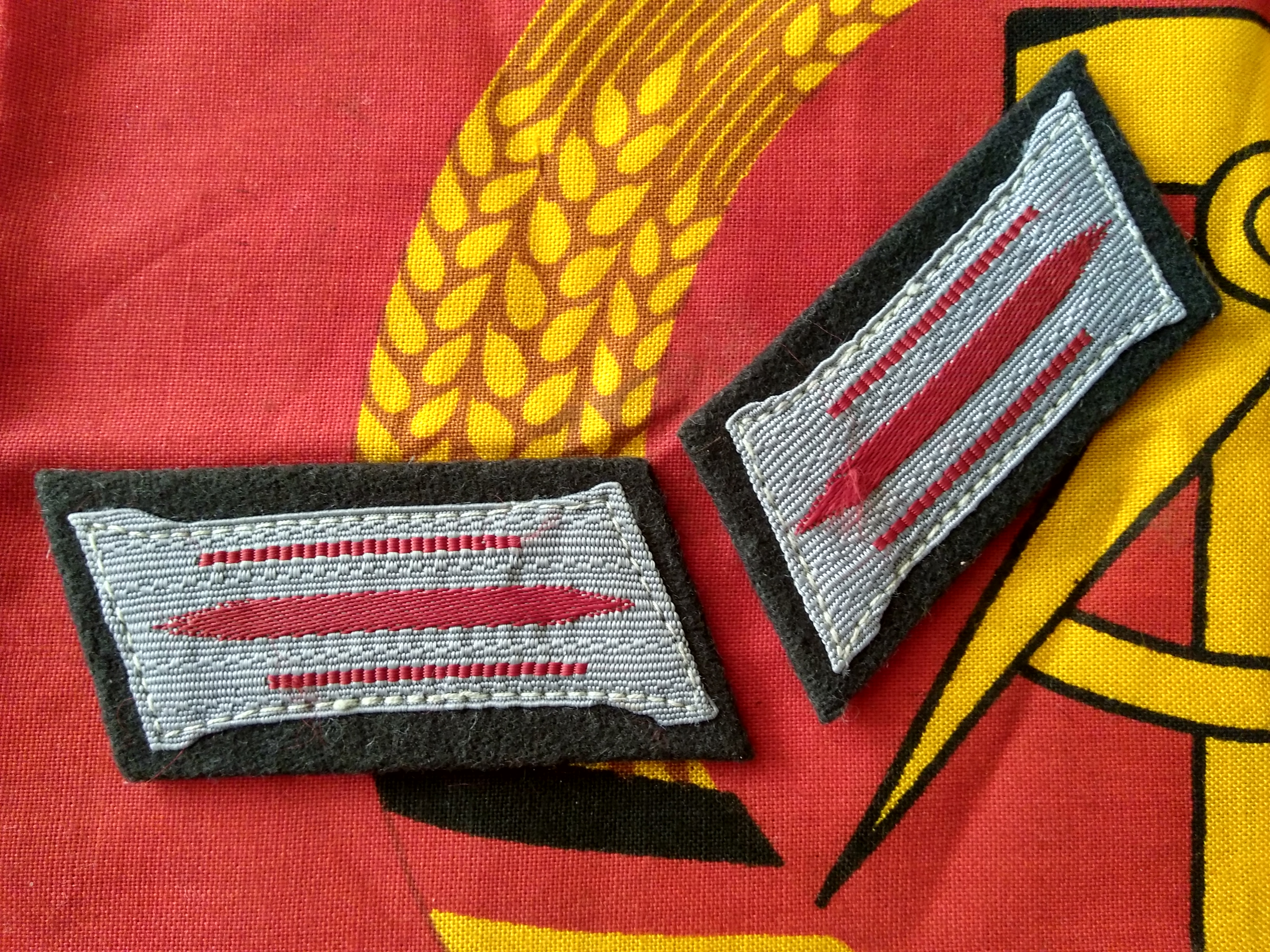

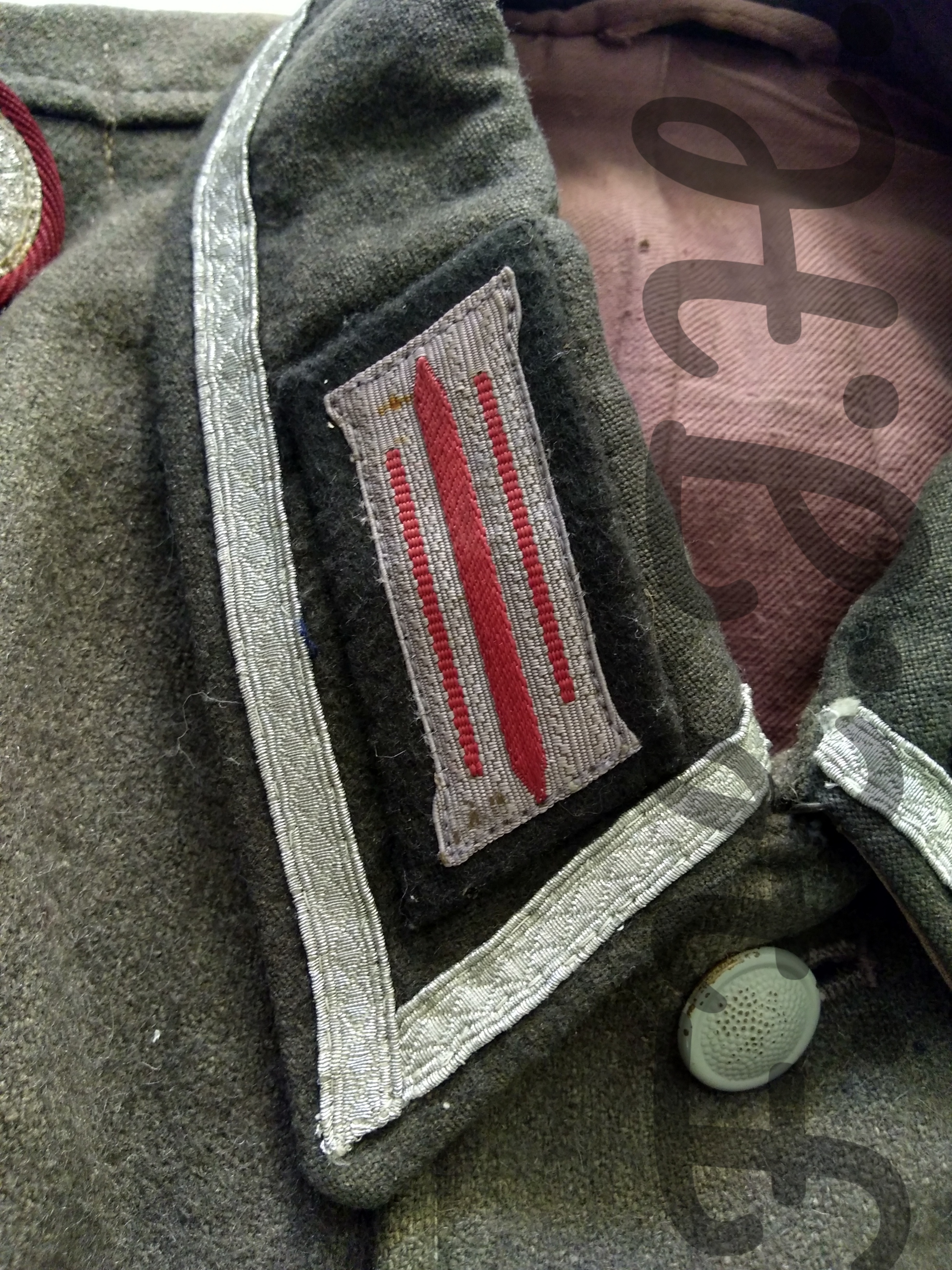
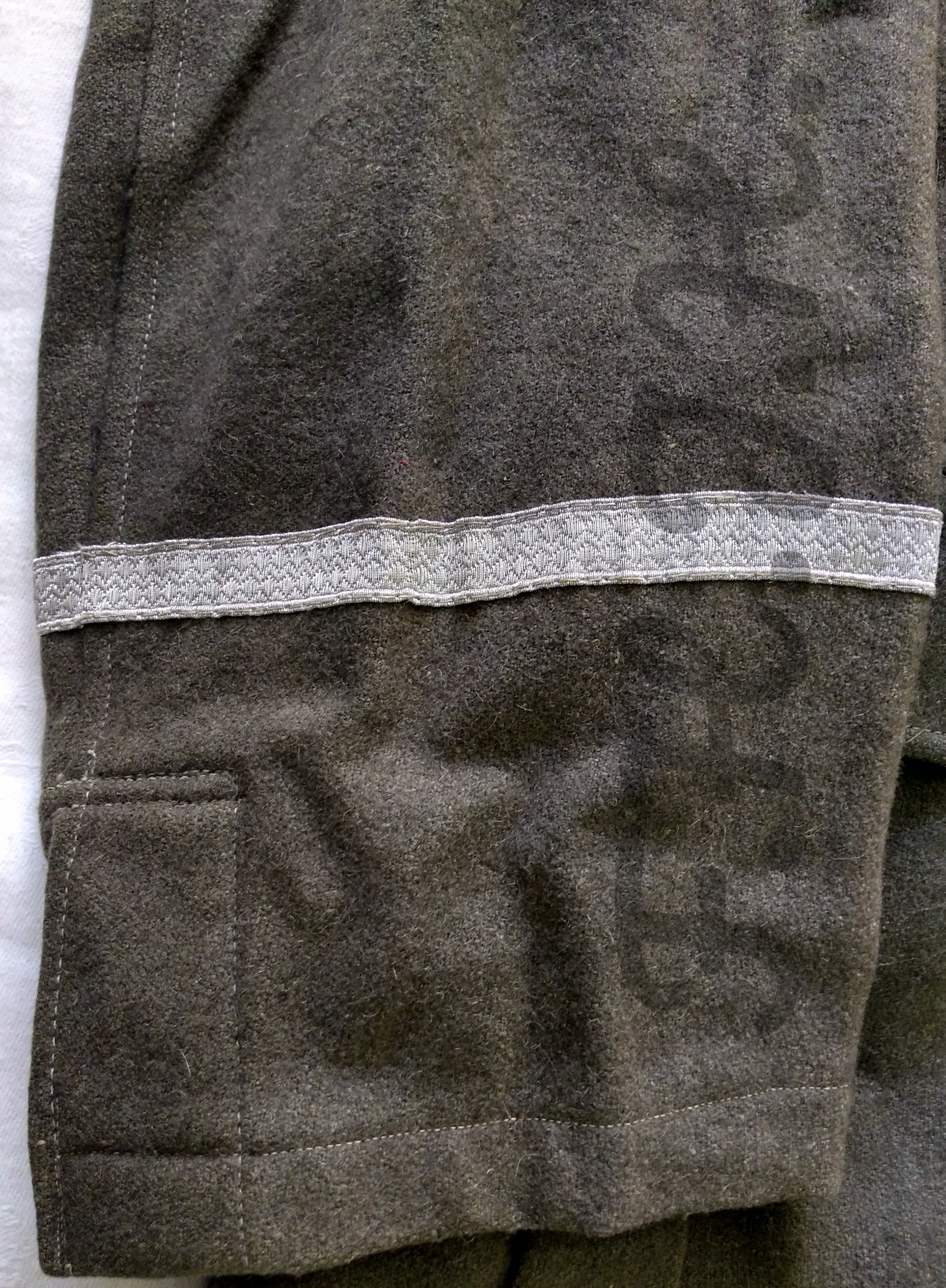
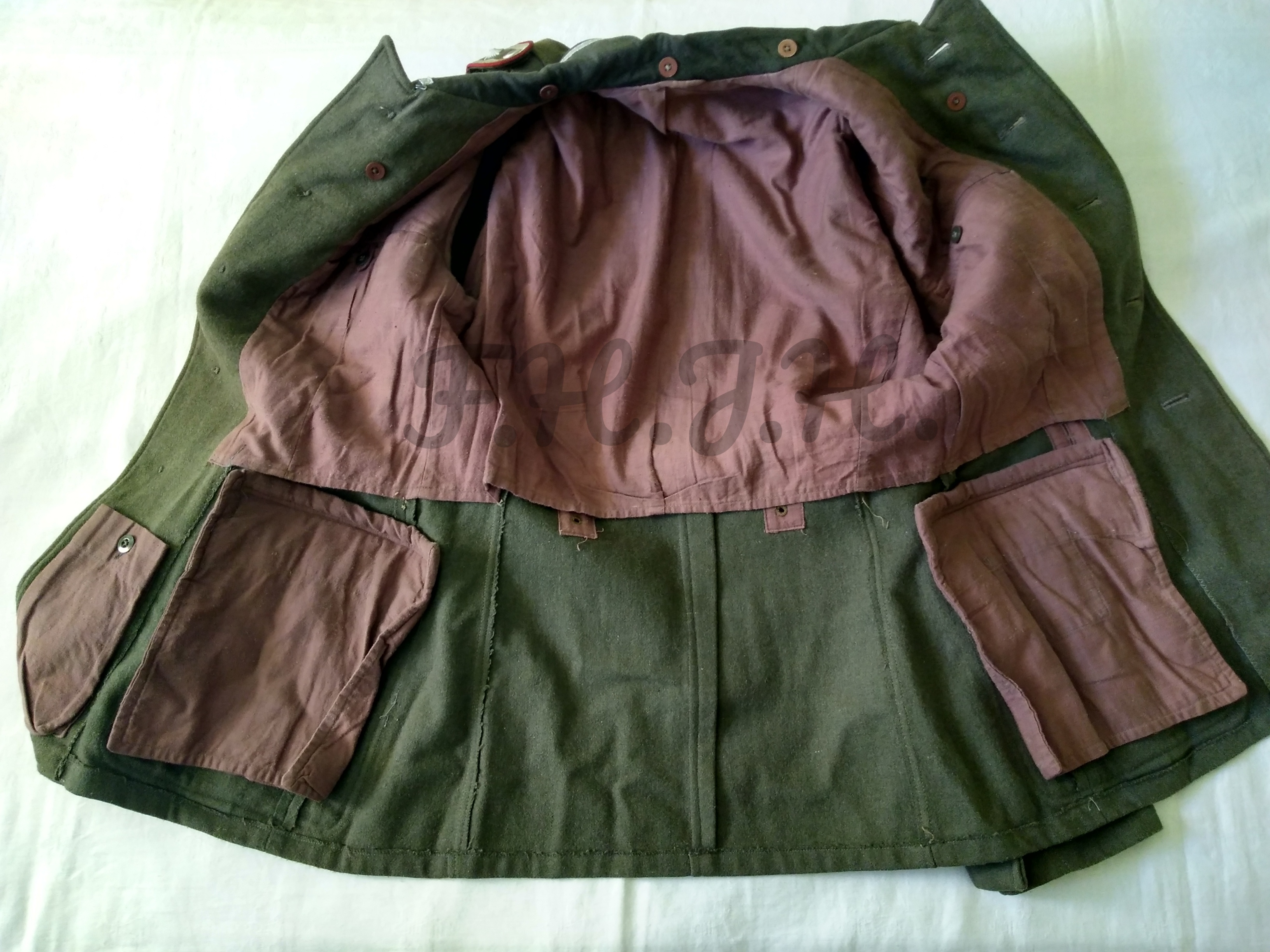
Footnotes:
(1) The Waffenrock being the Wehrmacht parade and going out uniform lavishly decorated with coloured collar and cuff turnback, false rear pockets and an 8 button front. The geschmückte Feldbluse being a simpler, finer made and decorated variant of the service uniform mostly used for walking out.
(2) Note that the air force wore plain collars, not dissimilar to the WW2 Luftwaffe.
(3) Note that the air force did not adopt cuffbars until 1961.
(4) Note that the army overcoats did not wear collar tabs, only air force ones did on their plain collar overcoats.
Bibliography:
- Klaus-Ulrich Keubke and Manfred Kunz, Militärische Uniformen in der DDR 1949-1990.
- Uniformen der DDR blog: http://uniformen-der-ddr.blogspot.com/
- Warrelics forum: http://www.warrelics.eu/forum/heer-luftwaffe-kriegsmarine-uniforms-third-reich/collar-patch-terminology-706434/





